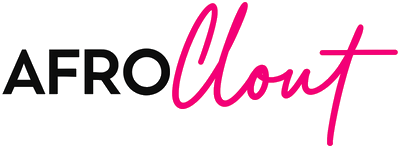How to Write Headlines That Drive Traffic, Shares, & Results
Introduction
If you want Headlines That Drive Traffic, you must write for people first. The algorithm follows real interest, not magic. In Nigeria and across Africa, readers reward clarity and cultural touch.
Strong headlines set expectations. They open a curiosity gap without tricking the reader. Moreover, they match the promise inside the content.
What sets a “traffic” headline apart?
A winning headline moves a real person to click and stay. It signals value in seconds, really. However, it also frames the story so the first paragraph lands fast.
The Psychology Behind Clicks in Nigeria
People skim on small screens. They notice numbers, power words, and local cues. Therefore, tie the message to Lagos traffic, fuel prices, or exam season when relevant.
Attention loves contrast. Use tension between problem and promise. Additionally, keep the idea focused on one clear benefit.
Four levers you can pull
- Tension: show a pain or risk and offer relief.
- Proof: add data, names, or time frames.
- Novelty: reveal a new angle on a known issue.
- Specificity: give the exact outcome or time saved.
Templates for Headlines That Drive Traffic
Plug these into your niche and test them weekly. Consequently, they work on blogs, YouTube, and WhatsApp.
Number + Outcome + Constraint
“7 Lagos Side Hustles That Pay in 30 Days”
Problem → Promise
“Struggling With CPC? Cut Ad Costs Without Killing Reach”
Curiosity With Context
“What This Abuja Tailor Did After Fuel Prices Jumped”
Authority Angle
“Veteran Pharmacist Explains the One Supplement You Actually Need”
Urgency + Proof
“Why 3,214 Nigerians Switched Phones This Month—And What They Kept”
How to customize templates
Swap in local nouns and verbs. Use the names your audience uses. Furthermore, repeat the core benefit in the thumbnail or preview.
On‑Page Rules for Headlines That Drive Traffic
Headlines do not live alone. Your H1, H2, and meta must align. Thus, readers feel safe to keep reading.
Keep length under 65 characters when possible. Put the main keyword early. Also, test a colon or dash to add a second idea cleanly.
Power words that play well in Africa
Use words like “smart,” “simple,” “today,” and “free.” Avoid false urgency. Instead, earn trust with clear value and proof.
Localize for Africa, Win More Clicks
Your audience reads in English, Pidgin, and local languages. So, sprinkle familiar phrases. You can even test a callout like “for Naija SMEs.”
Context wins on social feeds. Mention timing, holidays, or school calendars. Likewise, echo the voice of your market without stereotypes.
Micro‑examples by niche
- Fintech: “Zero‑Fee Transfer Tricks Banks Won’t Tell You”
- Food: “Rice Prices Up? 5 Budget Meals That Still Slap”
- Careers: “Ace That NYSC Interview With These Two Lines”
- Fashion: “Friday Owambe? 9 Head‑Turning Fits Under ₦25k”
Testing Headlines That Drive Traffic
Great writers test like engineers. They ship two titles, measure, and learn. Therefore, they grow faster with less guesswork.
Run A/B tests on newsletters and socials. Switch only one element at a time. Moreover, measure click‑through rate, read time, and saves.
Simple test plan
Create two versions for one story. Post version A on LinkedIn and version B on X. Then send the winner to your email and WhatsApp lists.
Workflow: From Brainstorm to Publish
Ideas need a system. You can move from chaos to consistency with a weekly rhythm. Consequently, the work feels lighter and the results grow.
Monday: brainstorm 20 headlines from one topic. Pick five.
Tuesday: write outlines and H1 choices.
Wednesday: draft, then rewrite the H1 three times.
Thursday: publish one piece and repurpose for Reels.
Friday: review metrics and tag your top two hooks.
The 70/20/10 mix
Use 70% proven headline patterns. Invest 20% in new angles. Finally, spend 10% on wild tests that may pop.
Mistakes That Kill Clicks
Witty lines that hide the benefit turn people away. Teasers without proof feel like bait. Additionally, long titles collapse on mobile screens.
Watch for double promises. Avoid jargon that only insiders know. Similarly, do not bury the lead behind clever puns.
Quick fix checklist
- Does the headline promise one clear benefit?
- Is there a number, noun, or time frame?
- Can a busy reader get it in one glance?
- Does the meta echo the same promise?
- Is the preview image reinforcing the hook?
Real Examples (And Why They Work)
Bad: “A Better Way to Save Money”
Too vague, no time frame, and no clue who it helps. Clearly.
Good: “Save ₦50k This Quarter With These Three Airtime Tricks”
It focuses on a result and hints at expertise.
Bad: “The Ultimate Jollof Guide”
Fun, but thin on purpose and outcome.
Good: “Nigerian Jollof at Home: 7 Chef Moves for Smoky Flavor”
It focuses on a result and hints at expertise.
Tools and Data for Better Headlines
Use Google Trends to see rising phrases. Check term popularity in Nigeria or Ghana. Thus, you avoid stale topics and phrase your hook like your readers do.
CoSchedule Headline Studio can score titles. Treat scores as guides, not laws. Moreover, track your own CTR over time for better signals.
Internal and external resources
Study our guide to Instagram Reels hooks for scroll‑stopping lines. Compare formats with the Afroclout rate card when pitching sponsors. Learn timing from Hootsuite’s posting research. Explore Nielsen’s Trust in Advertising to frame proof. Plan chat flows with WhatsApp marketing for SMEs. Understand trends from TikTok growth tactics in Nigeria.
Bringing It Together
Clarity beats clever when money is on the line. Short words win on small screens. They travel better. Consequently, your readers reward you with time and shares.
Write ten headlines for every article. Keep the best two. Also, log results weekly so next month feels easier and sharper.
Why this matters now
Ad costs rise and feeds move faster. Yet good headlines still set the pace. Therefore, brands that master the craft can grow even in tough seasons.
Extra: Make More Headlines That Drive Traffic
Use these patterns to reinforce the habit. They keep your brain sharp.
- “What Everyone Gets Wrong About ______ in Nigeria”
- “Before You Buy ____, Read This First”
FAQs (Styled)
1) What is the fastest way to draft strong titles?
Start with five templates and write ten options per story. Then pick two and test on social.
2) How long should a headline be for mobile?
Aim for under 65 characters. However, keep the promise intact even if you must go longer.
3) Do numbers still help with clicks?
Yes. They set scope and reduce risk. Moreover, they give readers a mental handle to hold.
4) Should I localize for Nigeria only?
Localize your lead examples to your largest audience. Additionally, keep terms broad enough to travel across Africa.
5) Which metrics should I track weekly?
Track CTR, time on page, saves, and shares. Also, note which hooks drive the most replies or DMs.
Discover more from Afroclout
Subscribe to get the latest posts sent to your email.




